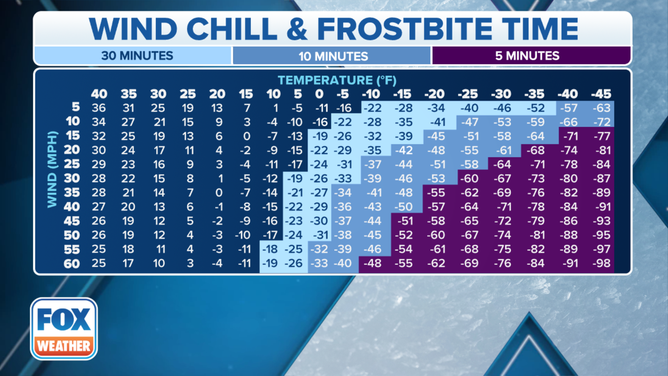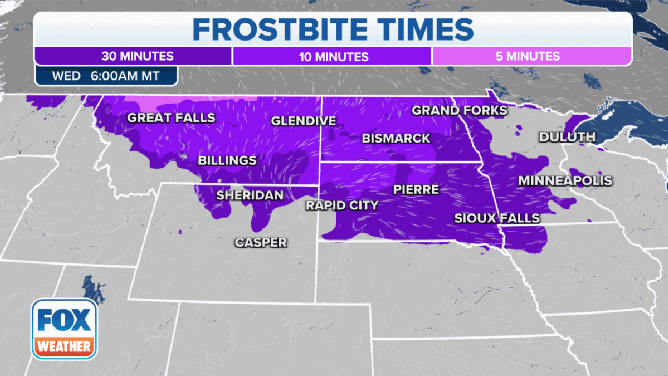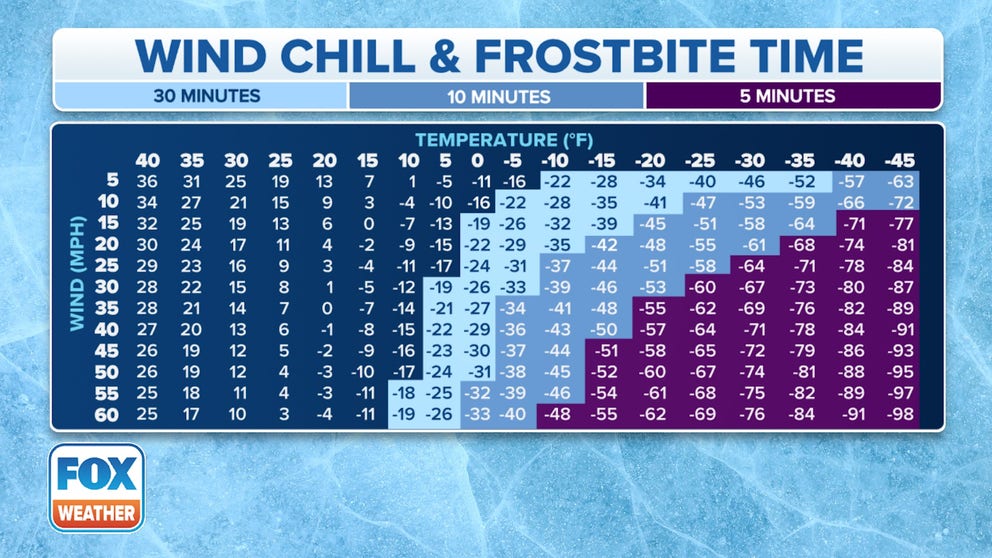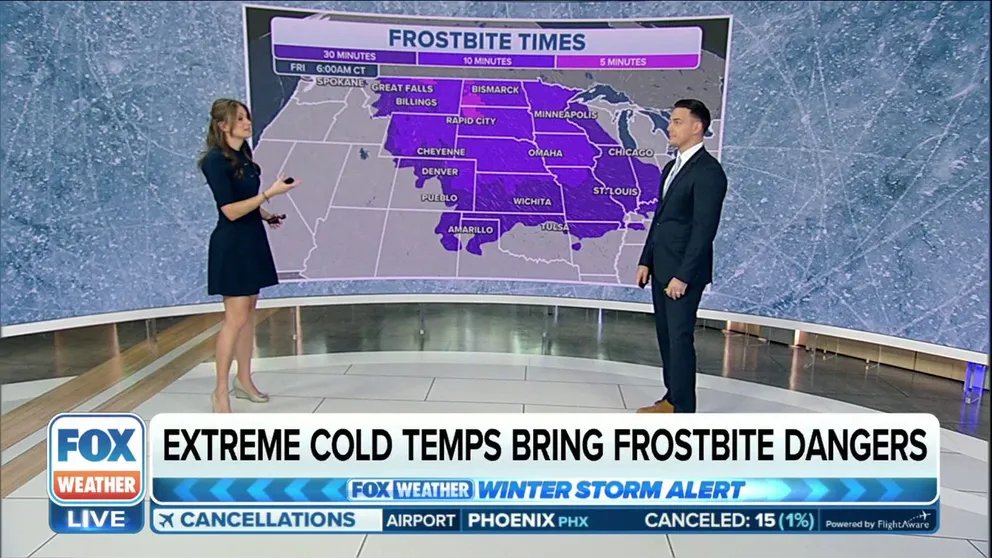Here’s how long it’ll take you to get frostbite as wind chills dip below zero
Frostbite can happen in minutes and affects any exposed skin area, especially on your fingers, toes, nose and ears. It occurs when the body's survival mechanisms kick in during frigid conditions.
How long it takes to get frostbite at every wind chill
Frostbite can happen in minutes and affects any exposed skin area, especially on your fingers, toes, nose and ears.
Extremely cold temperatures like those we'll see this week can be extremely dangerous.
Frostbite can happen in minutes and affects any exposed skin area, especially on your fingers, toes, nose and ears. It occurs when the body's survival mechanisms kick in during frigid conditions. To protect vital organs, the body will cut blood circulation to extremities, which could eventually freeze.
With a massive winter storm brewing this week for millions across the Midwest, Great Lakes and Northeast, there will be dangerous threats of heavy snow, rain, damaging winds and plummeting temperatures. By Thursday, frostbite could set in as little as 5 minutes in parts of the northern Plains.
WHAT TO DO IF YOU'RE AFFECTED BY FROSTBITE
Extreme cold temperatures bring frostbite dangers
FOX Weather's Britta Merwin and Steve Bender explain the dangers of frostbite from extreme cold temperatures.
According to the National Weather Service, the lower the wind chill temperature, the greater you are at risk for developing frostbite. Wind speed can also affect the onset of frostbite.

To determine the wind chill temperature, find the value closest to your outside air temperature. Find the value that most closely represents your present wind speed. Your wind chill temperature is the value where lines drawn from the air temperature and wind cross.
(FOX Weather)
For example, the NWS notes if the outside temperature is minus 30 degrees and the wind speed is 10 mph, frostbite can occur in 10 minutes or less with a wind chill temperature of minus 53 degrees.
To avoid frostbite, it's advised to stay inside where it's warm. But if you must venture outside, try to cover every part of your body and keep your skin dry.
Signs of frostbite can include the formation of ice crystals on your skin, as well as redness and/or pain in an area of exposed skin. Numbness and skin that feels firm or waxy can also be a sign of frostbite.

Frostbite could set in as little as 5 minutes in parts of the northern Plains this week.
(FOX Weather)

